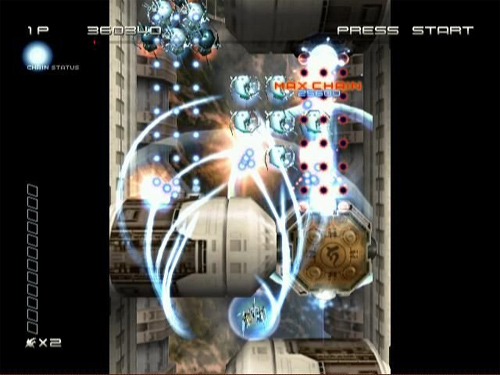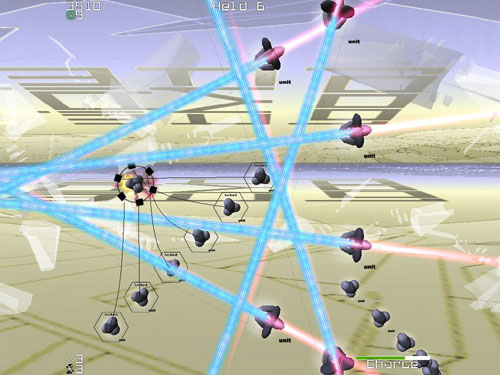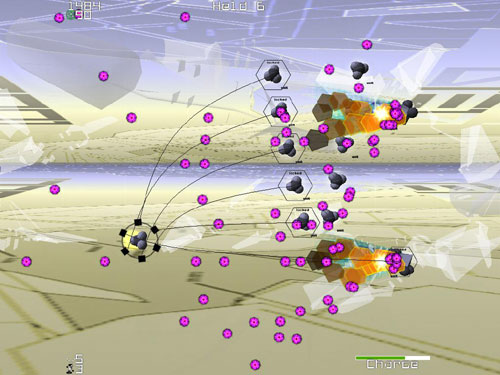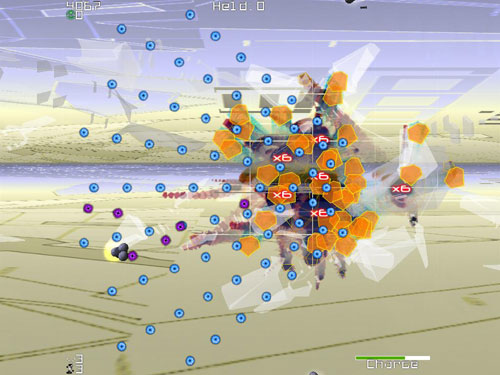I recently asked a question on the shmups forum, how many games have a ‘perfect score’. I was referring of course to shmups, but the question could apply to many games. Snooker has a perfect score, 147 achieved by potting all 15 reds with 15 blacks for 120 points then all six colours for a further 27 points. Darts has a perfect score, or rather a perfect set of throws to meet the 501 target. Most contemporary videogames have usually done away with scoring altogether in the attempt to broaden both audience and game experience. This is fine, but even within mainstream games the reappearance of score-boards in the form of console/steam acheivements and rankings has led to a resurgance of gamers playing for score again. Anyway, in score based games there is usually a potentially perfect score, ie performing all score rewarding actions possible (killing, collecting, time bonuses etc). Usually the perfect score may only be a theoretical one, impossible unless performed by cpu or programmable peripheral. It is interesting therefore, how games designers measure and divide their scoring mechanics, and how they deal with the idea of perfect scores.
Once a player has got the best score in a game/level/stage, there seems little incentive to replay that experience. Some people might do so, out of love for the game or some sort of showmanship, but on the whole it effectively ends the challenge of the game/level etc. In most game genres, this occurance is usually of secondary importance to the player, who strives for a narrative denouement of some sort or just the satisfaction of a credits screen. In shmups (and other ‘hardcore’ genres) the score IS the game, winning is scoring. So how to define a scoring system that both provides a sense of progression and potential max score, whilst also allowing some room for personal expression to result in eeking out a marginal lead over other runs.

Ikaruga has 3 main score mechanics: the alternating 3 colour chain mechanic, the boss timer bonus and the bullet eating mechanic. The first is essentially fixed, there is a maximum potential strategy to produce the best score, many expert players will plan, study and share routes until these optimum paths are well known. The second mechanic is slightly more variable, since the time taken to kill a boss reflects more on the players technique and positioning (which may also be compromisd by other bullet eating strategies). The final mechanic is again slightly variable. Players are rewared by asbsorbing same polarity bullets, so positioning and timing is essential in order to maximise the ‘catching’ of enemy bullets. The first mechanic has an obvious maximum, the other two, less so, but I am not sure if their is any randomness in terms of the number/rate of enemy bullets fired. If not then there is also a perfect solution for bullet eating. Of course the actual skill involved in acheiving these 3 maxmimums together (and in a balance that produces an overall max) is beyond human players. But it is the possiblity space of those potential extra points that keeps many players hooked.
I am writing a shmup as part of some research and also part of my own desire to visualise these ideas and engage with the mechanics. In my scoring system a player can shoot enemy craft to ‘capture’ them, these targets are then held by a cable to the player ship. The player can capture up to six targets at once and when releasing the chain is rewarded with gratuitous explosions and points. The risk reward balance is that while enemies are held in a chain they still behave as normal, firing at the player and obstructing the play field. The longer they are held, the more danger they pose.

The scoring increases exponentially for each additional item in the chain: 1-item=1pt, 2-items=4pts, 3-items=9pts …. 6-items=36pts. Obviously holding a full chain of six reaps significantly more score (216) than six individual locks (6pts). The levels are designed with the total enemy population divisible by 6, so there is a potential number of 6(max) chains acheivable across a stage. This also means there is a perfect score for each level and for the game in total.
Now I am unsure as to whether to leave the mechanic there. With this system there is an obvious target, something concrete to aspire to. It might not be easy to achieve as the chains require stragetic planning and dexterity to catch, but it is fixed. I have other options to extend the score space..

Bonus score is awarded for ‘hold time’ ie how long the player risks a chain before detonation. Is perfectly possible to grab 6(max) and then hang on to them until the last minute you need to switch to a new chain. This hang time could be rewarded. Similarly I could count score as a constant tick, measured by how many you have in a current chain, this way the incentive would be to get chains up to 6 as fast as possible and hold for as long as possible.

There are other variations, but one thing ive noticed is that if i introduce hold time as a score modifier the stages can end up feeling slow and empty, since you may well spend seconds just locked on, waiting for the next wave. I want the game to be able to be played by scorers and casual players, so blasting through with just 1 lock at a time reduces the risk (less active enemies, less bullets) but also empties the screen if its specifically designed for long holds. At the moment Im tempted to fix on the simple 6 chain mechanic and introduce enough interesting wave combinations and strategic tricks to keep the idea challenging while also proposing a perfect score. Perhaps with a clearer target players will feel its more worthwhile perfecting their runs.
This all may seem fairly miniscule in terms of general game design, but in the context of certain genres and modes of performance I think it actually makes the difference between a ‘shallow’ and a ‘deep’ game experience.
Now for some clips, the sound is not recorded properly since i had the wrong input selected and some of the graphics/models are still placeholders etc.
syslock1 from Tom Betts on Vimeo.
Above: demo run of first few waves trying for max(6)chains – 3384 score at end
syslock2 from Tom Betts on Vimeo.
Above: demo run of first few waves not trying for chains – 692 score at end